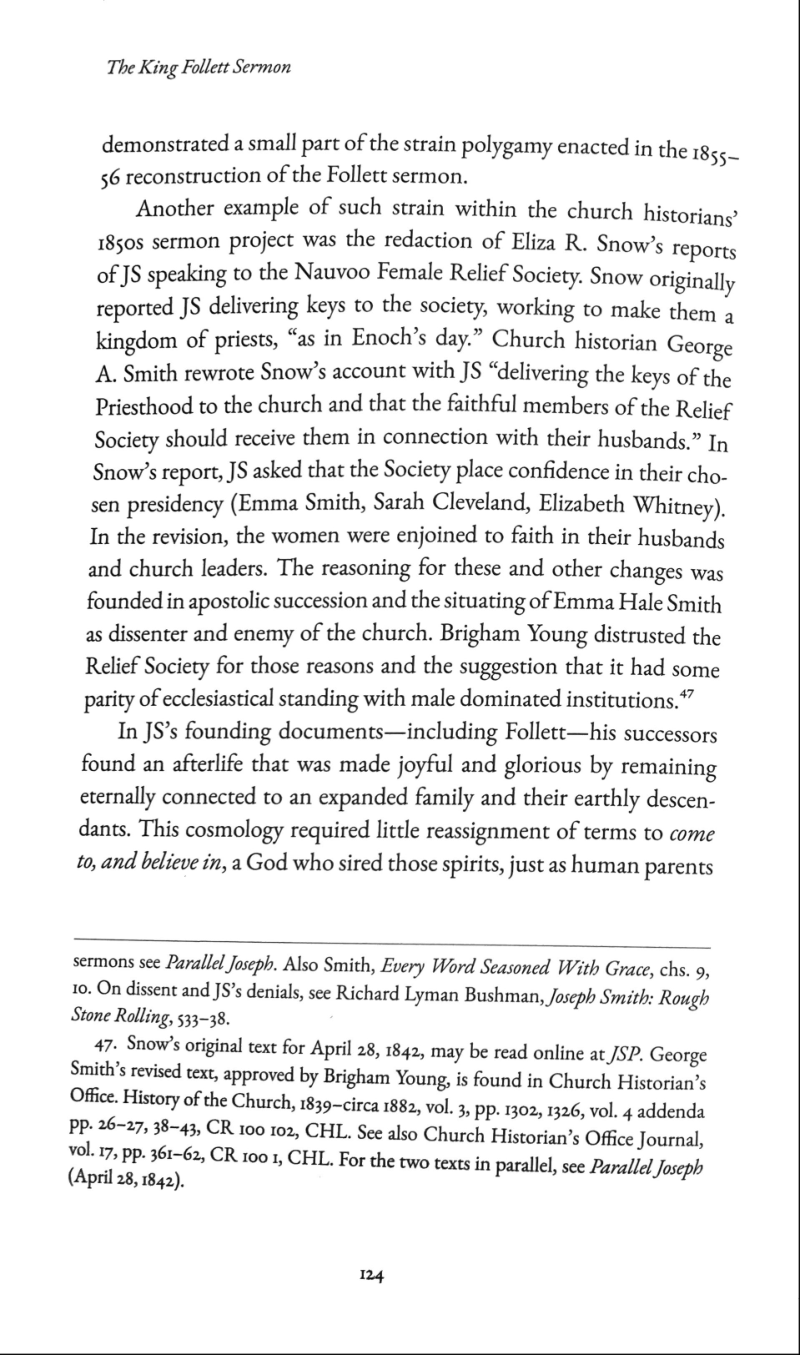William V. Smith discusses the influence of the King Follett Discourse on Brigham's theology of Adam-God and Orson Pratt's belief in a Heavenly Mother and Father.
- Type
- Book
- Source
- William V. Smith LDS
- Hearsay
- Direct
- Reference
William V. Smith, The King Follett Sermon: A Biography (Essays in Mormon Studies; Newburgh, IN: By Common Consent Press, 2023), 124-26
- Scribe/Publisher
- By Common Consent Press
- Audience
- Reading Public
- Transcription
In JS’ founding documents—including Follett—his successors found an afterlife that was made joyful and glorious by remaining eternally connected to an expanded family and their earthly descendants. This cosmology required little reassignment of terms to come to, and believe in, a God who sired those spirits, just as the human parents propagated their species. Yet the linking of God and sex was repugnant to Illinois Mormons in Nauvoo times as it was to Protestants.
Brigham Young saw a new vision in his own reformatting of the Godhead, with Adam and Eve as birth parents of all human souls and the first human bodies after Eden, an idea beginning to settle by the time of the westward Mormon migration in 1847. Young saw this same Adam returning to earth to sire Jesus. Eve was Mother on Earth and Mother in heaven—indeed, the very mother of all. In many ways, this constellation of ideas marked the apex of Mormon alterity, yet in its focus on a domestic or later, a nuclear family, heaven represented a feature of the age. In the medieval and early modern epochs of the Christian era, it was not the preservation of earthly loving that preoccupied believers but the dread of facing the Last Judgment after death, something that the Reformers of the sixteenth century encouraged.
Orson Pratt rejected the theological turn of Adamic godhood; he wishes to keep the fatherhood of Jesus within the classical Christian package. But even his system required a God-Wife, a Heavenly Mother, who was once a mortal woman; in turn, this pressed Mormonism into more than the three-story religion of Protestant Christendom Mormonism became a religion not just of Heaven, Earth, and Hell, but the religion of one long, connected, self-replicating cosmos.
Nineteenth-century Mormon leaders like Young announced that Mormonism was simply a description of the way everything worked, by axiomatizing a heaven in the image of earth and positing an infinite regression of Gods mentioned above. Follett offered support here: God was once am an who owed allegiance to his own Father-God. I the end, twentieth-century Mormonism rejected and adopted different elements of both Orson Pratt and Young, cutting away the portions reciting Pratt’s atomic-agent-first-cause and young’s vision of Adam and Eve in service of polygamy, while leaving behind a somewhat incoherent package of statements disconnected from their logical antecedents.
- Citations in Mormonr Qnas
The B. H. Roberts Foundation is not owned by, operated by, or affiliated with the Church of Jesus Christ of Latter-day Saints.

